Technically Speaking with David Reher – NHRA National Dragster, December 10, 2010
Are Burnouts Abusing Your Engine?
In my recent back-page columns, I’ve focused on the mechanical side of drag racing: cooling systems, lubrication systems, fuel systems, and ignition systems. This time I’m going to address a different topic: How a driver’s burnout technique can affect the engine and chassis.
I’m an engine builder, not a driver, but in more than 40 years in drag racing, I’ve witnessed thousands of burnouts. I’ve worked with tire engineers in extended test sessions. I’ve watched burnouts performed by championship-winning professionals and by novices at bracket races. Where I really see the effects of burnouts is in the engine shop.
How can burnouts affect engine performance and reliability? I’ve asked myself that question when two identical engines have come back to our shop for overhauls in vastly different conditions. Both engines were assembled with the same components and specifications, both produced virtually the same dyno numbers, and both had made a similar number of runs, yet one looked nearly perfect and the other was abused almost to the point of failure. In an age of electronically controlled automatic shifters and rpm limiters, how is this possible? I’ve concluded that how a drag racing engine is treated during burnouts has a lot to do with its long-term reliability.
The best procedure is a smooth, driving burnout to clean and heat the tires. It’s essential to back off the throttle before the tires bite. A driver who has a good feel for the car instinctively lets off the gas before the tires grab. If the tires suddenly hook up under power, the result is often instant, violent tire shake. This problem is aggravated by the necessity in Sportsman racing to use larger tires due to the widely varying track conditions that Sportsman drivers race under.
In a high-horsepower race car with a manual transmission, the abrupt meeting of horsepower and traction during a burnout will almost invariably knock out the carefully adjusted clutch. In an automatic-equipped race car, the telltale sign is elongated bolt holes and cracks in the flexplate. The evidence can also be seen in the chassis as cracked suspension mounts and bent framerails. The smooth application of power during a burnout won’t do that.
I don’t recommend using a stepped rpm limiter during the burnout. It’s alright to have a high-speed limiter as a backup to prevent overrevving the engine in case of a broken drivetrain or a stuck throttle. It’s not OK to put the throttle pedal on the floor and run the engine against the limiter for the duration of the burnout.
Limiters work by cutting spark to the cylinders, essentially causing continuous misfires. Many are so effective that they can control the engine speed to within a few rpm. The downside, however, is that the prolonged interruption of the cylinder firing is very hard on the engine. Instead of a steady flow of power pulses being delivered to the crankshaft, the power comes in starts and stops as cylinders are dropped and fired again. The intense vibrations that result are transmitted throughout the engine, affecting the crankshaft, the camshaft drive, and the valvetrain. The driver can’t appreciate what’s happening because the engine is usually popping, banging, and running rough when it’s on the limiter.
Operating the engine at a specific rpm imposed by an rpm limiter for an extended time during a burnout can have serious consequences if the natural frequencies of the components are in sync at that particular engine speed. I’ve learned this from my own experiences. Years ago, my late partner, Buddy Morrison, built a spin fixture to test valvetrain dynamics. It wasn’t nearly as sophisticated as today’s Spintrons, but it did the job. We had a 460-cid Ford hooked up to the test engine through a gear drive and spun the crankshaft at whatever rpm we wanted. We’d watch what the valvetrain was doing at various rpm with a 60-cycle strobe light, and sometimes what we saw was shocking.
At certain speeds, the valvtrain would be totally out of control, with the pushrods smoking and the valve springs bouncing completely off the heads and retainers. The particular rpm where these frequencies converged depended on many variables: the pushrod diameter and wall thickness, the valve spring pressure, the camshaft profile, the valve weight, the rocker arm ratio, and many other factors. It was an eye-opening demonstration of the effects of harmonics in a racing engine.
Years later, I was reminded of that experience when Bruce Allen and I were breaking in tires with our Pro Stocker on the day after a national event. We’d left our race engine in the car, thinking that a few low-rpm burnouts to scuff new sets of slicks couldn’t possibly damage it.
Well, we just about killed that engine in the span of a few seconds. When I pulled off the rocker covers after the burnouts, there was smoke rolling out of the valley. The valve springs had collapsed, the pushrods were trashed, and we were fortunate we hadn’t destroyed our best engine. Even though the engine was running far below its peak rpm, the particular engine speed that it ran during the tire break-in burnouts produced a perfect storm of valvetrain harmonics.
A racing engine that operates across a range of speeds typically doesn’t spend enough time at a specific rpm point to experience damaging harmonic vibrations. If the engine is electronically held at a prescribed rpm that excites harmonic vibrations by a rev limiter during a burnout, then the result can be internal damage. This damage is cumulative, with the parts deteriorating every time a burnout is done at the same rpm.
When we disassemble an engine and find broken valve springs, damaged pushrod and rocker arm cups, and other signs of harmonic-related distress, it points a finger at the burnout procedure. And identical engine that’s run without a burnout rev limiter may who none of these symptoms because the driver’s right foot can’t hold the rpm at a constant prescribed speed. The problem is that the engine speed where harmonics occur can’t be pinpointed – it depends on the complex interaction of all the components. Change the pushrod diameter or install a set of different valve springs, and the valvetrain dynamics will change as well.
In my experience, most of the engines that are in good condition when they come back for an overhaul have been raced by drivers who do smooth burnouts – controlled by the throttle pedal, not by a limiter – and get off the gas before the tires grab. If a racer perfects this technique, the engine will live longer and perform better. ND
David Reher is co-owner of Reher-Morrison Racing Engines. Send correspondence regarding this column to Technically Speaking, c/o Reher-Morrison Racing Engines, 1120 Enterprise Place, Arlington, TX. 76001.
=======================
Additional comment by Roger Young, Edwards & Young Racing: I absolutely agree with David Reher on this very important discussion. I learned many years ago in aircraft powerplant school that all reciprocating engines have several “criticals” throughout their operating RPM range. It was very common that tachometers in piston-powered aircraft had several red zones where you were not to operate an engine for any time period whatsoever. You had to quickly pass through those critical RPMs.
Such criticals were not limited to engine damage, especially in piston-powered helicopters. At certain RPMs if the engine was operated for any period of time it could lead to catastrophic airframe failure as the engine, main rotor system, tail rotor and airframe would reach a common harmonic that would literally shake the helicopter to pieces!
We also learned from a local racer in Top Sportsman that his large-displacement engine suffered significant engine damage which was attributed to doing burnouts on the rev limiter at wide open throttle. After only a few runs the engine had lifter, cam lobe and bearing damage which a leading engine builder attributed to his burnout procedure.
With our ’57, I do our burnout in 3rd gear. If I continue the burnout until the tires stick it overheats the sintered-iron clutch and will likely turn the tires hard on the starting line because the clutch hits harder on the launch.
For many more technical articles, see our “Tech Tips” section on Edwards & Young Racing
I thank David Reher for once again educating all of us. – Roger Young


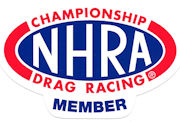
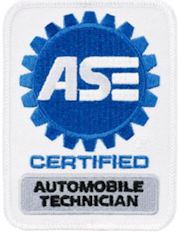
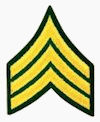













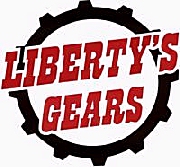
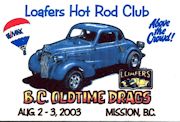









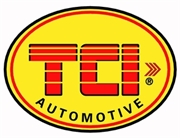





IN OUR 357 WE HAD SIGNIFICANT VALVE TRAIN WEAR THAT IN HINDSIGHT MAY HAVE BEEN MY DOING WHEN HITTING THE HIGH RPM REV LIMITER DURING THE BURNOUTS. ONE CAN ONLY LEARN FROM THESE ISSUES AND HOPE TO ELIMINATE THEM.
I’m still learning after 45 years of racing! That’s part of what makes this sport very interesting. About the time you think you have it all figured out you learn even more.
THE DAY WE QIUT LEARNING IS THE DAY WE STOP IMPROVING. GOD KNOWS WE CAN STILL IMPROVE ON MY END AT LEAST.:)
Some really interesting details you have written on northwestvets.com .Aided me a lot, just what I was searching for 😀 .